DID YOU KNOW? & TIPs
Get some helpful and interesting fast facts
to assist you in solving problems or decision making
Interesting & Helpful Fast Facts
Here are some interesting and helpful fast facts that will answer some questions you might have about products, protocols or solutions.
Stop by from time to time as we will constently add to these Did You Know? fast facts.
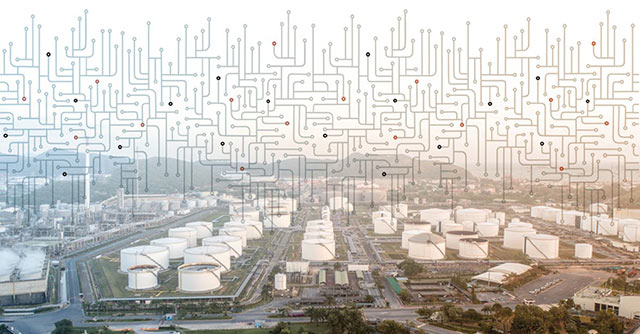
Ring protocol compatibility
Did you know that WeOS 4.22.0 can solve difficult compatibility issues in switched ring topologies?
When mixing different vendor hardware in industrial layer 2 switched networks there is always the problem of compatibility between redundancy protocols. Many switch manufacturers have their own ring protocol solutions which are not usable in mixed environments. There is a common protocol used by many vendors, Rapid Spanning Tree. However this is not an industrial protocol and it has its limitations to the network structure and fail-over timings so it is not really an ideal option.
In WeOS 4.22.0 Westermo now supports the Media Redundancy Protocol MRP. This is an industrial protocol with a long and proven track record in harsh environments. The fact that it is an open standard enables compatibility between vendors as well as providing the correct characteristics for industrial grade networks, fast fail-over, large installations and reliability.

VRRP resilience
Did you know providing media resilience to remote Industrial sites is easy?
Over the years remote access to unmanned sites has become critical for many businesses saving both time and money. Many of these sites are connected using broadband or mobile routers. Occasionally these services can fail. So how can a remote access solution employ a backup channel?
VRRP (Virtual Router Redundancy Protocol) is the answer. A second router can be added to the network and VRRP handles the decision of which channel to use.
The big advantage that VRRP brings is that the connected equipment does not need to know there are 2 routers which share a single IP gateway address. The 2 or more routers decide which is the primary channel and data is routed via that channel until a failure occurs with the primary router whereupon the secondary backup router becomes the channel. Once the primary router is restored the data will switch back.
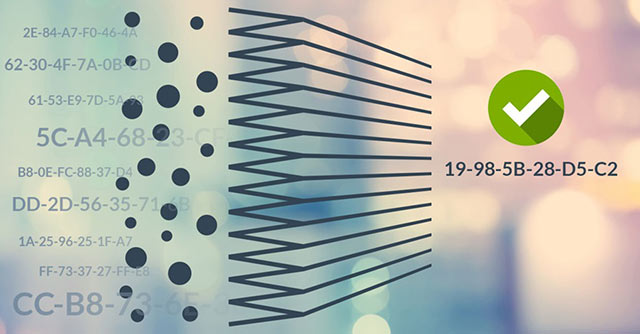
WeConfig MAC filters
Did you know WeConfig can create and deploy MAC filters across a whole system with only a few clicks of the mouse?
Every Ethernet device has a unique hardware MAC address. This address can be used to lock a port on a managed Westermo switch to only accept a device with the specific matching MAC address. However, applying these filters can be very time-consuming. Typically, each MAC address has to be entered against the port where a device is connected one by one, switch by switch. In large networks, the process of adding MAC addresses will take a long time, and mistakes are easy to make. MAC filters also make replacing the connected device problematic, for example, if an RTU or PLC needs to be replaced then the MAC filter will need to be changed to include the new address. The combination of the time it takes to configure, the risk of making errors and the level of maintenance often lead to this important cybersecurity defence not being used.
WeConfig NCM (Network Configuration Manager) removes all the issues around deploying MAC filters with just a few clicks of the mouse. WeConfig looks at each switch and compiles a list of MAC addresses on each port. The MAC addresses are compiled into a filter list for each port ready for download to the switches in the network ensuring an easy, fast and accurate deployment of MAC filters across the whole network. WeConfig can also go further by analysing the gathered MAC addresses looking for addresses from the same vendor. Where the same vendor is detected on the system, the MAC filters are adjusted to allow for easy replacement of the end device without the need to reconfigure the switch.
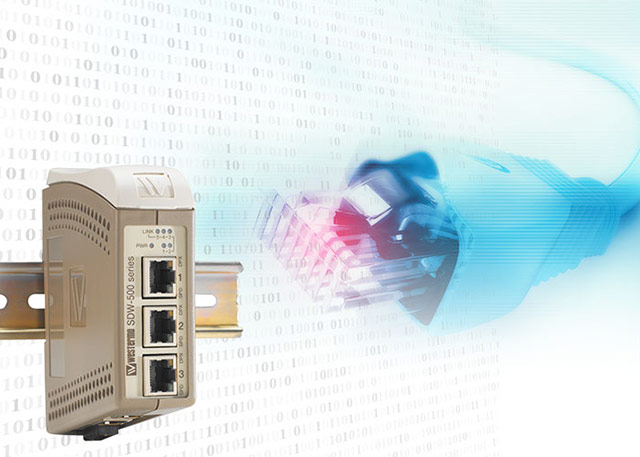
Network tap
Did you know that the SDW switch is the perfect troubleshooting tool?
When troubleshooting communications in a network, it can be really difficult to know exactly what type of traffic or how much data that is traversing the network at a certain point in time. Sometimes a link needs to be “tapped” in order to use traffic analysers. When tapping the network, in effect mirror the flow of packets passing through the switch without interfering or acting on it. Being able to do this means that communication issues can be identified and corrected quickly. For example, if a device is not responding to data sent to it, the traffic can be analysed using the tap to see if messages are present on the link or if the replies for some reason are sent but are dropped elsewhere in the network.
Creating a tap or a mirror port using the SDW series of switches is extremely simple and only requires the user to flick a dip switch. Regardless of the size of the network being able to quickly and easily create a tap on a link will save time and effort when analysing communication issues.
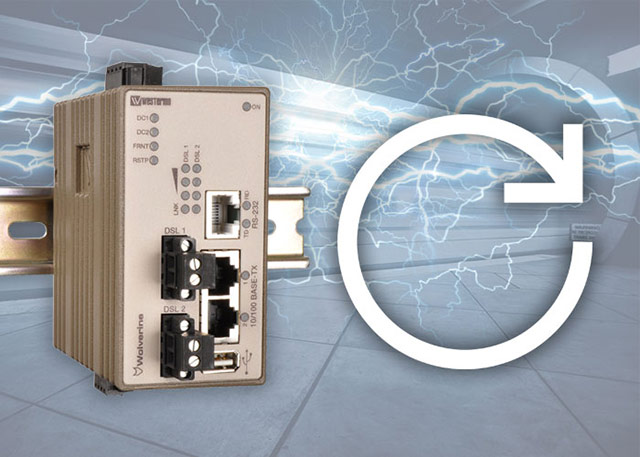
Emergency freeze
Did you know the DDW-x42 have a robust link up functionality?
In many applications, it is vital to keep the communication going even in poor environments that may be subject to bursts of electrical noise. Typically a burst of noise will induce interference on the communications cable causing the communications to break down. This is not a new problem, any application using modems or xDSL technology will experience interference from time to time. The net effect is a breakdown in communication and a renegotiation of the connection. When using SHDSL, this can take up to one minute, which is a long time to lose communications on vital or critical infrastructure.
The DDW-x42 devices come with a very smart feature that helps to prevent the communication completely breaking down due to a short burst of noise on the interconnecting line. With the Emergency Freeze function enabled a retrain of the connection can be avoided. When the burst of interference has passed, the DDW-x42 will attempt to use the frozen parameters to reconnect. There will still be a small interruption for the duration of the interference, but this will be a few tens of milliseconds instead of a full renegotiation taking tens of seconds.
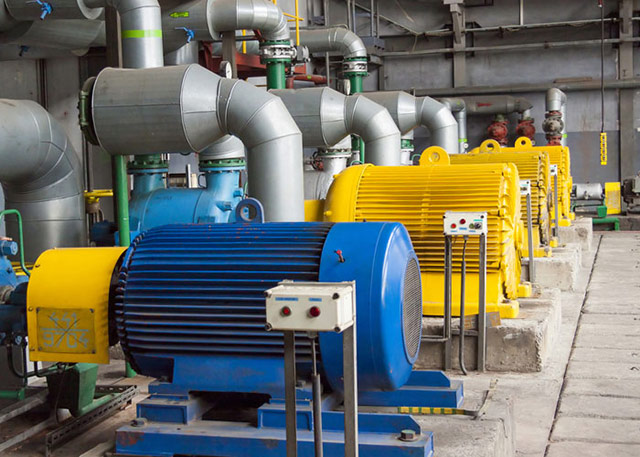
Serial Communication Solutions
Did you know that the RD-48 is a problem solving device for old RS-485/422 communications?
Old bus technologies using RS-485 and RS-422 have strict rules on how the network can be built and used. For instance, a bus network cannot have greater distance than 1200 meters and not more than 32 devices connected to it, or proper functionality is not guaranteed. A bus network also requires the start and the end devices to be terminated correctly, making it impossible to create star topologies.
The Westermo RD-48 repeater is a problem solving device for this type of serial communication as it will allow for greater distances as well as increasing the number of devices that can be connected to the bus. The RD-48 also makes it possible to create star topologies as it can properly terminate multiple bus connections. Using the RD-48 will also add to the overall network robustness as it provides galvanic isolation for each copper cable connection, resulting in a more reliable exchange of data even in environments with high levels of electromagnetic interference.

1-1 NAT
Did you know that 1-1 Network Address Translation make’s reusing the same subnet for multiple systems very easy?
Often when repetitive configurations are needed like in onboard train, machine or wind power farm networks, it is highly desirable from a manufacturing point of view to reuse the same configuration every time a network is built. Reusing the same IP address range and configuration is efficient and cost effective from a standardised manufacturing perspective but presents a problem when the systems need to be linked together. For example, when wind turbines need to link to a central SCADA or there is a need to implement an IIoT remote access system for assets monitoring or maintenance system.

Extremely Fast Re-Configuration
Did you know the ring re-configuration time of the ODW series is extremely fast?
At the birth of industrial data communications, serial protocols were very limited in how many devices and the network complexity they could support. These limitations allowed for very small delays in the communication as they were designed for few devices and simple network configurations.
However, with a growing need for data communications with capacity for greater distances and above all, ring redundancy, new technology had to be able to co-exist with the old technology. Because of the narrow delays of the old serial protocols it is essential that the ring re-configuration timing is really fast or the communication will run into problems.
The Westermo ODW-series of serial to fibre converters are capable to delivering solutions with an extremly fast fail-over time even in very large ring topologies. A theoretical calculation with 100 ODW devices in a ring network with a total distance of 40 km would only take 2.8 ms to recover. This is so fast that the protocols would not even be aware of the network recovery, which means that any standstill because of network downtime could be avoided.

Bi-directional SFPs
Did you know that Bi-directional SFPs can help save money in refurbishment projects?
When improving and extending networks there isn’t always enough fiber optic cables installed for the new functions needed. This means that new cables must be added at a very high cost for the customer. It might not even be allowed to add cables to a fixed installation due to fire and security regulations.
The answer is to use Bi-directional transceivers (BiDi SFPs); these transceivers can transmit and receive light signals over the same fiber core. Normally there is one core that transmits and one that receives light, thus the two fiber cores in a fiber optic cable. The BiDi SFP transmits at one wavelength and receives at another therefore a blue and a green marking indicates which one to use at each end of the cable. Westermo BiDi SFPs come in a wide variety of versions; Multi Mode, Single Mode, 100Mbit/s up to 120 km, 1Gbit/s up to 80 km, with DDM diagnostics and without.

DHCP server cost efficiency
Did you know that the WeOS DHCP server can save money in train refurbishment projects?
Refurbishment projects for on board train networks are often very cost sensitive, which is limiting the possibilities of the network design. In order to save money, much of the management are often centralised to one single switch so the rest of the network can be built with less costly unmanaged switches. However, there are base functions that always need to work regardless of budget, and Westermo has solutions that make it possible to combine cost efficiency and reliability in this type of projects.
The DHCP server is a good example of one of those base functions that just have to work. However, when centralising old equipment into one point, Option-82 (port based distribution of IP-addresses) information might not be sufficient to assign the correct IP-address to the right end-device. The problem is that the unmanaged switches connect several end-devices into only one port of the DHCP server switch, so this will require something else to identify each device uniquely. DHCP Option-61 (Client ID distribution of IP-addresses) provides a solution to this problem. Complex issues where the same device ID is presented on different ports. For example, door controllers on opposite sides of the carriage are connected to the DHCP server switch via unmanaged switches connected to different ports on the DHCP server switch. The door controllers will have the same ID but it is imperative we know which controller is on which side and the position within the carriage or the wrong door will be opened when the train arrive at a station. WeOS can resolve the issue by using a combination of Option 82 and Option 61 to work out the correct address to forward to the door controller using the Client ID (Option 61 and the port (Option 82) the request for an IP address is received.

Ensured mobile connection
Did you know that the MRD 3G/4G router has a feature for ensuring continuous mobile connection?
In mobile networks there are only a certain amount of devices that can be connected at each point in time; therefore the networks are designed to use the resources in the most effective way possible. This means that a device which does not pass data through the network will be “kicked out” in favour of devices that is. For industrial applications this is likely to cause some issues, since most installations do not pass through a lot of data and the fact that they are always in the same location (never changing base station).
To re-establish a connection a restart of the mobile interface is required, which can be carried out manually by accessing the device while on site. This is of course not appreciated by the customer as site visits are time consuming and costly. The time from when the connection is lost to when it is restored varies, but it can be very long. During this time, a lot of valuable data can be lost for the customer.
Installing a Westermo MRD-series 3G/4G-router gives the customer a means of ensuring that the connection stays up at all times. The MRD-series offers connection management, which lets the device send out a PING-request to a reliable IP-address. This keeps the connection up in two ways. First of all it ensures that traffic is passed through the network continuously, lowering the risk of losing connection due to being inactive. Secondly the device will recognize if the PING-request does not receive a response, which proves the connection is down. The unit will then attempt to restart the connection a configurable amount of times. If this fails it will reboot to re-establish a connection.
